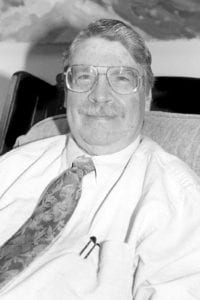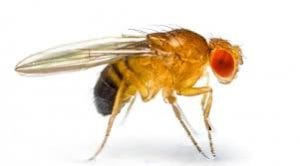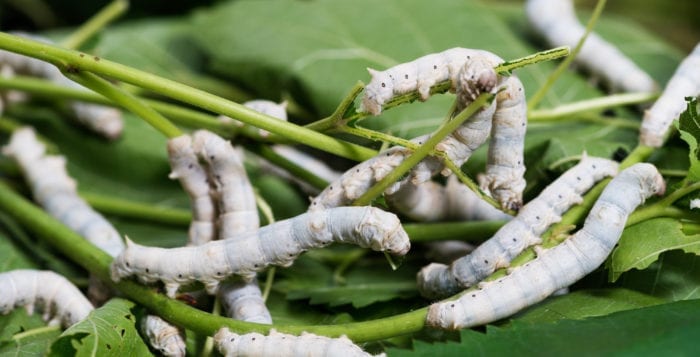By Elof Axel Carlson

I got my doctorate working with a model organism, the fruit fly, Drosophila melanogaster. It was introduced to science about 1905 at Harvard where William Castle and his students studied the wing veins of these flies for subtle changes that Darwin’s theory of natural selection proposed. Castle suggested to Thomas Morgan at Columbia that he could use fruit flies for a study of mutations that Morgan hoped to launch.
Morgan was luckier than Castle because his use of fruit flies led to the discovery of sex-linked inheritance and a process of shifting genes between matched chromosomes. It led to the chromosome theory of heredity and the theory of the gene as a unit of inheritance present in chromosomes.
Botanists found corn or maize (Zea mays) an ideal organism and classical genetics had inputs from both fruit flies and maize. The most famous contributor to maize genetics was Barbara McClintock who worked out a field of cytogenetics by isolating structural components and consequences for broken chromosomes that experienced rearrangements.
The bacteriophage viruses and bacteria like Escherichia coli were major contributors to molecular biology. Bacteria are cells but viruses are not. Viruses do have a life cycle, living as destructive parasites or beneficial insertions into bacterial chromosomes. Bacteriophage studies confirmed many of the predictions of DNA as the chemical basis of heredity. They also confirmed that a virus’ proteins are not needed to produce the proteins of its progeny.
The flow of information goes from the genes as DNA to molecules of RNA carrying the genetic messages to cellular units that translate them into proteins. Bacteria were also used to work out how genes are switched on and off, an important process that regulates how cells work. Most of these early studies in molecular genetics were initiated by Max Delbrück for bacteriophage viruses and by Joshua Lederberg for bacteria.
For higher organisms a life cycle involves fertilization of an egg by a sperm and the formation of an embryo, which forms different organs with the resulting baby turning into an infant or child and eventually a mature adult and lastly an aged or senescent individual who dies. Sydney Brenner in 1963 suggested using a nematode, the roundworm found in the soil, Caenorhabditis elegans, to work out how this life cycle can be studied at a molecular level. They are similar to the roundworms called vinegar eels seen in flasks of organic apple cider vinegar.

Genetics is a composite of the work with many different organisms in plant, animal, and microbial worlds of life. The designation model organism for research biologists distinguishes the usage of research organisms. Applied genetics is often used with specific purposes in mind that benefit the economy. Silkworms are popular among Japanese geneticists because of the silk industry. Tomato geneticists are interested in color, flavor, texture, size and shelf life as they are for most vegetable crops, applying genetics to improve varieties.
Model organisms were chosen to explore the biology, especially the genetics, reproduction, embryology, metabolism, neurobiology or other fundamental ways living organisms have adapted to their environments and evolved. Biologists working with model organisms often find that once the basic biology is worked out it can be applied to benefit health and the economy. It may take decades before that happens.
When Calvin Bridges in Morgan’s laboratory found extra or missing chromosomes associated with fruit flies, he did not know that some 40 years later extra chromosomes would be associated with birth defects or disorders in humans such as Down syndrome (trisomy 21) or Klinefelter syndrome (XXY males).
In some ways humans serve as a model organism. Linus Pauling was interested in how red blood cells carry oxygen from the air and discharge carbon dioxide into it. His curiosity led to a working out of the structure of the hemoglobin molecule and its mutational difference when healthy individuals have their hemoglobin analyzed and compared to that of persons with sickle cell anemia. Pauling called sickle cell anemia a molecular disease. Note that Pauling’s motivation was not that of a physician seeking a cure for a disease but that of a chemist seeking the molecular basis of how we breathe and why oxygen and carbon dioxide ended up exchanging places in red blood cells.
Humans are also model organisms for the field of neurobiology, especially for processes like memory, learning, association, pattern recognition and speech, most of which would be difficult to infer from the study of a roundworm’s much limited nervous system. This human study is more likely to be at the physiological and anatomical level rather than the molecular level because there are numerous brain injuries and genetic disorders of the nervous system that can be used to identify where to look for these functions.
Elof Axel Carlson is a distinguished teaching professor emeritus in the Department of Biochemistry and Cell Biology at Stony Brook University.





